Film Locations in Italy: Cities and Landscapes
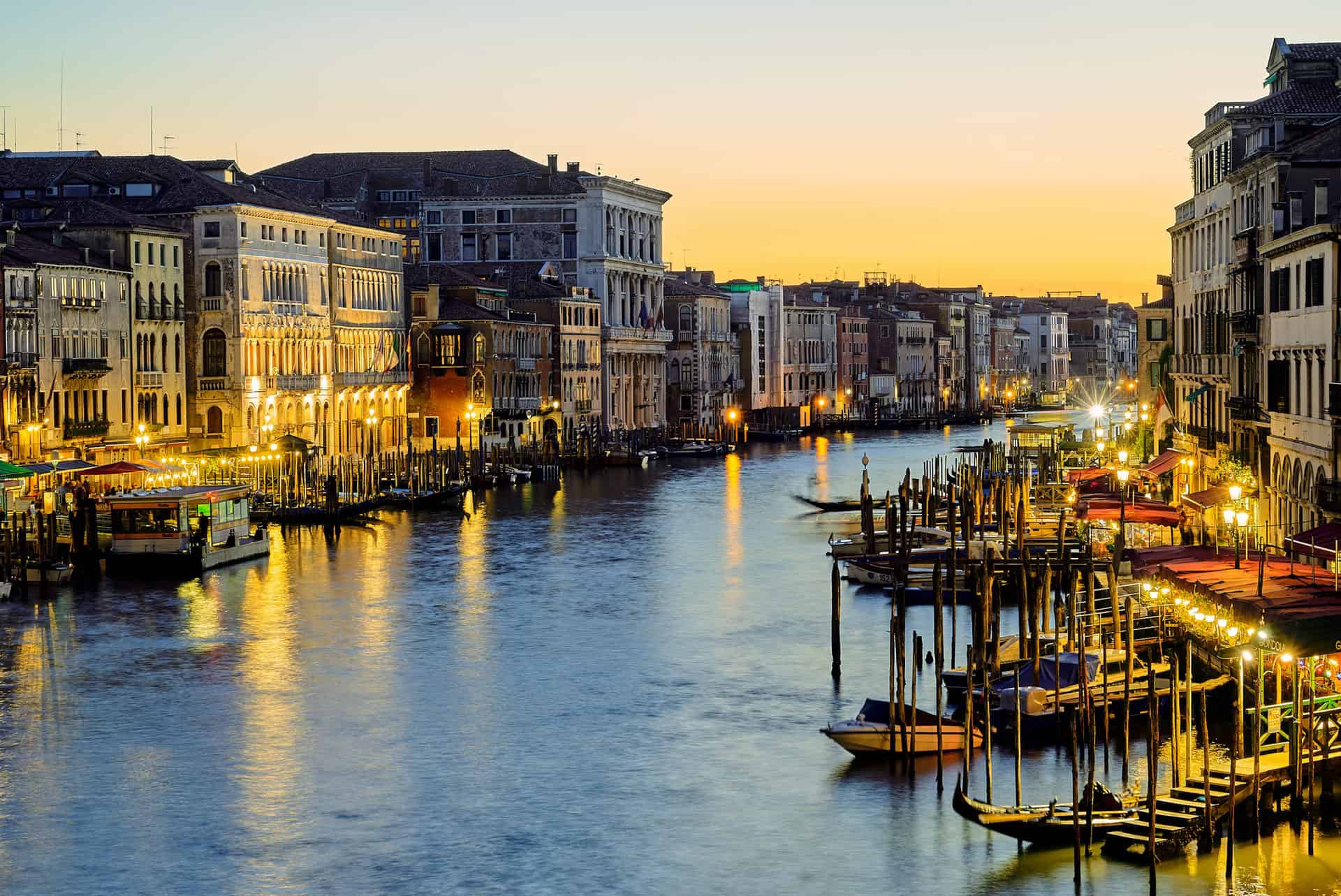
Updated On: April 22, 2024 by Dina Essawy
Film Locations in Italy – What you need to know!
Roman civilization is one that is famed for its culture, so it is only natural that Italy has inspired so many artists over the course of its history. Filmmakers, especially, have been enchanted with the country’s lush landscapes and have chosen it as a backdrop for many of their movies over the past few decades. Some of the most memorable movies in Hollywood history were filmed in Italy and one of the reasons why they are so memorable is because of their remarkable filming locations. Here are some of these movies and where exactly they were filmed.
“An Offer He Can’t Refuse”: The Godfather Filming Locations
When thinking of Italian culture, there is a trilogy that stands the test of time – The Godfather. There’s no doubt that the Godfather trilogy has left a lasting impression on all movie lovers and transformed the cinematic landscape for years to come. Filmed in locations in Italy, The Godfather films were released in 1972, 1974, and 1990 respectively.
Based on Mario Puzo’s novel of the same name, the plot revolves around Don Vito Corleone, the ageing patriarch of an organized crime family who transfers control of his illegal empire to his reluctant son. Although the family lives in New York City after emigrating from the town of Corleone in Sicily. The films continuously give us flashbacks, spanning 1901-1979 taking us from New York to Las Vegas, Miami and Cuba to Rome and Sicily.
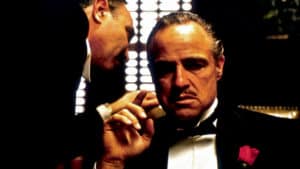
Most of the Italian scenes were filmed in Sicily. For example, after Michael Corleone kills Sollozzo and McCluskey (the NYPD Police Chief), he flees back to Corleone in Sicily. However, since the area was too modern to be used to film events taking place in the 1940s onwards, filming was done in Forza d’Agrò and Savoca in Messina province.
As Michael walks back into his father’s hometown, you can see the countryside surrounding the village of Forza d’Agrò.
Afterwards, Michael and his men walk past an old church; the Cattedrale di Maria SS. Annunziata e Assunta.
After he meets Apollonia, he walks into the Bar Vitelli in Savoca to ask about her. This bar still exists today.
The next location is the Castello Degli Schiavi (used as Don Tommasino’s villa), Via Badalà, where Michael arranges to meet Apollonia and where he also teaches her to drive. The villa also makes an appearance in the two sequels. The beautiful baroque style castle is still standing and open to visitors.
If you walk down the street from Bar Vitelli, you can find the church where Michael and Apollonia got married; Chiesa di San Nicolò. These are the main Italian filming locations in the first film before we move on to the sequel where the scenes filmed in Sicily mainly cover Don Vito’s life before he emigrated to America and in 1923 when he briefly returns to his homeland.
In the Godfather II, during Vito’s father’s funeral, his older brother Paolo is shot by the same mob boss that killed his father. Vito’s mother visits the mob boss’ villa to beg for mercy on her only surviving son, only to be killed as well. Later in the film, Vito returns to Don Ciccio’s villa to exact revenge for murdering his entire family. The villa can be found on Via Vecchia Pozzillo. If you search for it on Google Maps, you’ll find it’s named after the film Villa Il Padrino Parte II.
We come across the Castello Degli Schiavi, also featured in the first film, but this time we see it when a young Vito and his family stay in Don Tommasino’s villa while they’re in Sicily.
Now, we move on to The Godfather III, that is set in 1979, taking the family to Sicily as Michael’s now grown-up son, Anthony, makes his opera debut in Palermo, the capital city of Sicily. Of course, they visit Corleone, which we know is Forza d’Agrò.
Michael and his family drive up to a villa in Palermo, but it is said to be in Bagheria in the film. The actual villa is Villa Malfitano Whitaker which was owned by an English wine exporter in the early 20th-century. The entrance fee is €6 to explore the ground floor and the vast grounds. It is said that it was used by the mafia to hide weapons, which makes it a perfect location for the film!
Don Tommasino’s villa makes a reappearance once again, at Castello Degli Schiavi, in the third instalment of the Godfather Saga.
Also, when Vincent visits Don Altobello at his villa in Sicily, that is, in fact, Villa La Limonaia. This villa is now a gorgeous wedding venue with a patio overlooking the coast.
Going back to Trapani, Michael meets Cardinal Lamberto at Chiesa di Sant’Orsola, an old church with a huge well in its courtyard.
Taormina-Giardini Station is also featured in the scene when Kay joins Michael in Palermo, and she arrives into “Bagheria Station”. It’s not in Bagheria at all. If you head over there these days, you’ll find that it still looks the same.
As Michael takes Kay on a tour around Corleone we head back to the actual town of Forza d’Agrò, on the east coast of Sicily. When they stop at the house where his father was born, the house is located in Vico I Roma, 5.
Still, in Palermo, the Teatro Massimo in Piazza Verdi, the largest opera house in Italy, is used during Anthony’s opera debut. However, it seems that they only used the exterior for the film, since the interior of the opera house was undergoing renovations.
Peaches in Italy: Filming Locations in Call Me by Your Name
A film of mass critical acclaim, Call Me by Your Name was first released in 2017. Nominated for numerous awards, it did incredibly well winning an Oscar and BAFTA for Best Adapted Screenplay. The film also earned its lead actor, Timothée Chalamet, an Oscar and Golden Globe nomination for his role.

The film mainly takes place in the Villa Albergoni, 3, Via Montodine, south of Via Roma, in Moscazzano, a village about five miles south of Crema, an hour from Milan.
The square where Elio (Timothée Chalamet) and Oliver (Armie Hammer) have their first conversation is the Piazza del Duomo. Elio begins to declare his feelings to Oliver further to the north-west towards Pandino near the site of the war memorial in Piazza Vittorio Emanuele.
A while later Elio takes Marzia swimming north of Crema, near the Laghetto dei Riflessi at the village club night. Another familiar location that appears is Lake Garda, where they visit Sirmione at the southern end of the lake with Elio’s father, who’s working on an archaeological dig at the first-century Roman villa Grotte di Catullo. Then, the trio takes a sunset dip at the nearby Spiaggia Giamaica.
During their final days together, they visit the beautiful waterfall Cascate del Serio, Europe’s second tallest waterfall. The pensione they stay at is located in nearby Bergamo, and their night out is spent around Piazza Padre Reginaldo Giuliani, in front of the basilica di Santa Maria Maggiore.
Finally, the station where Elio and Oliver say goodbye is at Pizzighettone.
Under the Tuscan Sun (2003)
Under the Tuscan Sun was shot in one of the most enchanting provinces in Italy; Tuscany. Known as the birthplace of Italian renaissance and for its delicious food and tasty wine, Tuscany is a perfect place to host films like this. The movie itself feels like an ode to the beauty of the region. It revolves around a writer (Diane Lane) who makes an impulsive, albeit smart, decision to move to Tuscany to start over after a series of mishaps in her life.
The film was mainly shot in the town of Cortona, near Arezzo in Tuscany, and also near the hills around Tuoro Sul Trasimeno, overlooking Lake Trasimene in Umbria. The author of the book on which the film was based actually lives most of the year in Cortona, which is how she was inspired to write the story.
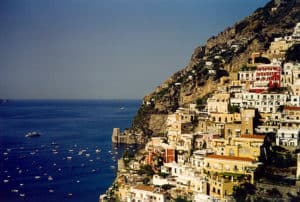
The villa where Diane’s character stays is a 10 bedroom, 10 bath villa Laura. It has now been refurbished and is available for rent and can accommodate up to 20 people.
The scene at the Fountain was actually shot at Piazza Signorelli, but sadly the fountain was only put in place for the movie.
The movie also gives us some lush shots of the Amalfi coast through the scenes that take place in Positano, like when Diane Lane is hit by a wave at the pier.
On her way to surprise Marcello, she is driven through the picturesque narrow streets of Positano on a motorbike as the wind flutters through her hair. We catch a glimpse of the beautiful village and its pastel-painted cliff-side houses with stunning views of the sea.
Angels and Demons: Illuminati in Italian Film
One of Tom Hanks’s most acclaimed films, based on the Dan Brown novel, Angels and Demons takes you on a journey as Robert, a symbologist, tries to stop a secret society from destroying the Vatican City. Naturally, the film was shot in several locations around Italy, especially the Vatican City, like Saint Peter’s Basilica. Also, Castel Sant’ Angelo and Passetto appear in the movie as a secret Illuminati spot used toward the end of the film.
Although much of the action takes place in the Sistine Chapel and St. Peter’s Basilica and Square, the scenes were actually shot inside a studio and the background was added on using CGI. Some of the external shots were filmed at the Royal Palace of Caserta as well.
The courtyard of the Biblioteca Angelica, at the Piazza di San Agostino, was used as a Vatican car park where Robert and Dr Vetra begin their quest around Rome to find the path of illumination.
Another one of Rome’s landmarks that are featured in the film is the Pantheon that is used as the first stop on the quest to find the four missing cardinals and the canister of anti-matter. However, the scenes that take place inside the Pantheon are all done using CGI.
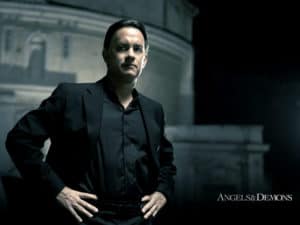
In another scene, Robert and Vittoria can be seen driving around the obelisk in the centre of Piazza del Popolo before heading into the Chigi Chapel in the Church of Santa Maria del Popolo.
The famous Piazza Navona is used as the location where Robert Langdon the last cardinal from being drowned in the fountain.
The film’s sequel Inferno (2016) was also set in Italy, between Venice and Florence.
The film’s official trailer starts off with a mysterious man being chased and ends up throwing himself from the top of a bell tower; which is the Campanile of the Badia Fiorentina. The tower is 70 meters high but, like many other monuments, were destroyed at the start of the fourteenth century. Thankfully, it was restored shortly after. Dante Alighieri even made mention of it when he wrote that he was born in Badia Fiorentina‘s shadow and we also know that this was where he met his beloved Beatrice for the first time.
Boboli Gardens in Florence is a magical location to be sure. Built between the 16th and 19th centuries by the Medicis, Boboli’s extensive gardens contain sculptures of Roman gods and is similar to an open-air museum. The gardens are the setting for one of the chase scenes in the film where Tom Hanks is followed by mysterious drones.
The Baptistery of Saint John is located right next to the cathedral of Santa Maria del Fiore, otherwise known as Duomo, and is considered one of Florence’s most iconic landmarks. The exterior is ornamented with three bronze doors, the third of which was made by Ghiberti and named the “Gates of Paradise” by Michelangelo. This door provides a clue that enables Langdon (Tom Hanks) to solve the mystery.
During one of the film’s turning points, Langdon and his assistant run through the Vasari Corridor – an elevated corridor that serves as a link between Palazzo Pitti and Palazzo Vecchio. When they arrive in the Salone del Cinquecento in Palazzo Vecchio at the end of the passage, they find themselves in front of the picture that also forms an important clue to solving the riddle.
The Corridor has an interesting history as it was built in five months by order of Duke Cosimo I de’ Medici in 1565, and designed by Giorgio Vasari. It was commissioned to celebrate the marriage of Cosimo’s son, Francesco, to Johanna of Austria.
Of course St. Mark’s Basilica and Square in Venice had a role to play in the film as well, seeing as its Venice’s main attraction and draws in millions of tourists every year.
And now on to Venice. This gripping thriller’s protagonists find themselves at St. Mark’s Basilica, one of Venice’s most iconic symbols, characterized by a winged lion on its facade and a richly decorated interior with gold Byzantine mosaics. The bells of St. Mark’s have their own names. Saint Mark’s Basilica and the museum containing the four bronze horses of Constantinople also form a turning point in the events of the film.
Letters to Juliet: Life After Shakespeare
Another film that feels like a love letter to Italy, particularly to Verona, Letters to Juliet tells the story of Sophie (Amanda Seyfried), a fact-checker for the New Yorker magazine, who is engaged to a chef (Gael Garcia Bernal) and they are about to travel to Verona, Italy. Her fiancé is always preoccupied with work, even during their pre-honeymoon trip, so she explores the city on her own. She finds the “Juliet Wall”, where people leave letters to Juliet for advice on love and discovers that a group of women collect these letters and compose replies, so she decides to help them.
One letter, however, changes the course of her trip. It was written by a woman named Claire (Vanessa Redgrave) fifty years ago. Claire asks Juliet’s advice on whether she should follow her heart and become attached to an Italian named Lorenzo (Franco Nero) or go home to England.
Sophie replies to the letter and is surprised when the older woman shows up in Verona, accompanied by her grandson who is disgruntled at Sophie for having meddled in his grandmother’s life.
The trio begins a search through the surrounding countryside for Lorenzo. Will they finally be able to reunite the long lost lovers after all these years? And will a new couple be born along the way?
The screenplay is wonderfully written that it explores the story and the surroundings at the same time. It’s a great way to explore the city that inspired Shakespeare’s Romeo and Juliet.
The locations for Letters to Juliet around Verona and Tuscany provide the perfect backdrop for this endearing love story.
The events in Italy start off when Sophie and her fiancé Victor head off for a romantic ‘pre-honeymoon’ in Verona, northern Italy. We see the city through a montage of establishing shots: its main square, Piazza Delle Erbe; the Ponte Scaligero over the Adige River; and the Arena, and the Roman amphitheatre.
South from Piazza dell Erbe, you’ll find Via Cappello, where you will come across Verona’s most famous tourist attraction, and the heart of the film’s story, Casa di Giulietta, (the House of Juliet).

The tradition of leaving notes on the house’s walls for “Juliet” to answer is real enough, although we’re not sure if the people who’ve left letters have ever gotten any replies.
You can enter the courtyard for free, but there’s an entrance fee to the house itself, so you can gain access to the balcony for an awesome photo opp. Also, tourists have also been known to stroke the left breast of the courtyard’s bronze statue of Juliet for good luck.
If you’re brave enough to wade through the crowds, you can actually stay at the hotel Il Sogno di Giulietta (The Dream of Juliet), which is in the courtyard, directly opposite the balcony.
Among the impressive locations that the characters venture to on their journey is the imposing palace of the wealthy Count Lorenzo (Fabio Testi), which is Villa Arvedi, Cuzzano, at Grezzana, that lies about five miles north of Verona. In reality, it is used as a centre for conferences and events.
However, what is very real is the luxurious hotel where the trio stays to search for Lorenzo. It is the Relais Borgo Scopeto, in Caparzo, a few miles north of Siena.
Sophie and Charlie go sightseeing in Siena as well, where they stroll through the 13th century Piazza del Campo, which also made an appearance in the 007 films Quantum of Solace.
They also have their ice cream fight on the Piazza San Giovanni, in front of the Battistero di San Giovanni (Baptistry of St. John). The Caparzo Vineyard, where Claire finally reunites with the real Lorenzo (Franco Nero), is the real thing. It actually covers five hillsides near Montalcino.
Quantum of Solace: 007 and Film Locations in Italy
The 007 franchise is known to all, dominating the narrative of the spy for decades. What makes this instalment special, aside from the superb plot and action sequences, is some of its stunning locations.
Quantum of Solace opens where Casino Royale ended; t Lake Como in Italy, where Bond drives his car along the Via Gardesana Centro. He arrives 100 kilometres away at the famous marble quarry of Carrara. Then, the scenes move on to Siena. The MI6 safe house is at Piazzetta Della Paglietta, on the Via di Salicotto.
Later on, Bond meets up with his contact Mathis at Talamone in southern Tuscany. Mathis’ home is the luxury retreat Torre di Talamonaccio, a restored Medieval tower on the Tuscany coast.
Eat, Pray, Love: Finding Food in Film Locations in Italy
Very few people have not heard of this book and the movie that starred Julia Roberts and caused a sensation across the world. Liz Gilbert (Roberts), a married woman with a flourishing career, found herself lost, confused, and searching for what she really wanted in life. Newly divorced and at a crossroads, she steps out of her comfort zone, risks everything to change her life, and embarks on a journey around the world that becomes a quest for self-discovery. During her travels, she discovers the true pleasure of nourishment by eating in Italy; the power of prayer in India, and, finally inner peace and the balance of true love in Bali.
Elizabeth Gilbert’s journey begins in Rome at the top of Castel Sant’Angelo. We hear her voice as the narrator as she tells an old Italian joke whilst looking out over the city of Rome during sunset.

After settling in the city, Liz frequents a café in Piazza Navona for her morning coffee. She, then, walks around the Piazza, admiring the beautiful Fiumu Fountain.
Afterwards, Liz and her new friend Swedish Sofi head to Naples to eat some delicious Napoli pizza which is proclaimed to be the “greatest pizza in Naples, therefore the greatest pizza in the world”. It seems to have been only served at L’Antica Pizzeria da Michele, which is one of the most well-known pizzerias in the city.
Later on, we see her sitting on a bench in Piazza Navona, right outside the Sant’Agnese in Agone church, eating ice cream.
Since her whole trip to Italy was about immersing herself in the delicious cuisine, she has dinner with her Italian teacher at a restaurant called Antica Trattoria Della Pace. In another scene, she also visits a pricier restaurant with her friends called Santa Lucia in the Largo Febo area.
The film wasn’t done with the historical landmarks, however, since the scene where she writes an email to David in New York takes place at the Mausoleum of Augustus.
The Tourist: Drama in Venice
Aptly named, this blockbuster film starring Johnny Depp and Angelina Jolie revolves around Frank, an American tourist visiting Italy to mend a broken heart and Elise, an extraordinary woman who deliberately crosses his path.
While the movie starts off in Paris, it quickly moves on to Italy, particularly Venice. In the beginning, Frank arrives at the Venezia Santa Lucia Train Station and is approached by Elise on a motorboat.
When they reach the Hotel Danieli, it is actually the entrance to the Palazzo Pisani Moretta. In addition, the restaurant where they have their first dinner is on the floating platform facing the Peggy Guggenheim Collection building.
The famous Rialto Market can be spotted during the chase scene as Frank walks on the roofs of several houses, reaching the Rialto Market.
The scene featuring the office of the Italian police is inside the beautiful Marciana Library, in St. Mark’s Square. While the Ball Feast takes place in the Scuola Grande Di Santa Maria Della Misericordia, a beautiful ancient building.
As for the Interpol’s Headquarters, they were set up in the Arsenale Di Venezia, where many of Venice’s ships were built in the past.
Roman Holiday: The Golden Age
We can’t very well write an article on movies set in Italy without mentioning Roman Holiday, which is a classic Hollywood film that will remain memorable throughout history.
Filmed in 1953, the movie stars Audrey Hepburn and Carey Grant, Roman Holiday literally takes us on a trip around some of the most beautiful landmarks around Rome.
Our first stop begins with the Palazzo Brancaccio which was used to film the scenes depicting Princess Ann’s Embassy. Built in 1880 and considered to be the last noble palace ever constructed in Rome, Palazzo Brancaccio’s magnificent Baroque room was featured as the Reception Ball, Her Highness’ dormitory and the Hall of Mirrors. The scene when Anna looks through the window at people dancing in the nearby garden party and wishing she was there with them, and when she escapes her room from the balcony are both shot at the Palazzo as well. Palazzo Brancaccio is located on Viale del Monte Oppio, between the Colosseum and the Basilica of Santa Maria Maggiore.
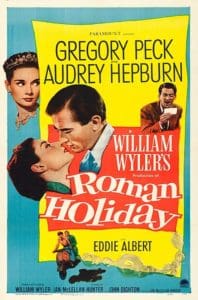
The Palazzo Barberini, a stunning Renaissance palace completed in 1633, was also used to depict scenes from the Embassy. It is located in Via Delle Quattro Fontane, Rome. Most of the exterior shots, including those the scenes of her escape from the palace were shot there, while the interior of Palazzo Barberini was not featured in the film.
The famous Spanish Steps is one of Rome’s most iconic destinations. Built around 300 years ago, the Spanish Steps is the longest and widest staircase in Europe. They lead up to a majestic 16th-century church, the Trinità dei Monti (Trinity of the Mountains).
Packed with tourists from all over the world, the Piazza di Spagna where the Spanish Steps are located has been a popular spot since the 18th century with artists, poets, and later Hollywood filmmakers. It has also become a traditional meeting point for Romans as well as for people from all over. There, you can also find the house-museum of John Keats, the English poet of Romanticism, who used to live here.
Back to our film, the Spanish Steps were the location where Ann, after getting a brand new haircut, sits on the steps, enjoying the view, and eating gelato. It is also there that she confesses to Joe Bradley that she had run away from school and accepts his proposal to spend the day with him before she has to return.
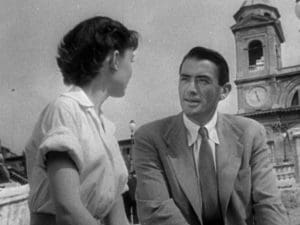
After the scene where Anne savours the gelato at the Spanish Steps and agrees to explore the city with Joe, “sit at a sidewalk cafe and look in shop windows, walk in the rain—have fun, and maybe some excitement,” Joe claims to know just the place to start; Rocca’s. Rocca Cafe next to the Pantheon (126 AD) is the place where Ann drinks champagne at breakfast, meets Irving Radovich, Joe’s colleague and photographer, and smokes her first cigarette.
As for the interior shots of Joe Bradley’s apartment on Via Margutta 51, they were filmed inside a studio set, while all the outside shots of the courtyard and the arched wooden entrance lies north from Vicolo dell’Orto di Napoli. If you are keen on looking for Joe’s apartment door, you can go up several flights of stairs. The view we get from Joe’s terrace was surely shot from one of these courtyard apartments.
The film does not fail to explore many of Rome’s most prominent features like Castel Sant’Angelo which appears when Princess Ann is invited to a night of dancing by the Tiber River by Mario Delani, the barber who gave her the new haircut. Although it is no longer there, the barge used to be moored between Ponte Vittorio Emanuele II (1886) and Ponte Sant’Angelo (134 AD), located at the foot of Castel Sant’Angelo, a 2nd-century mausoleum of the Roman Emperor Hadrian. The towering cylindrical castle in Parco Adriano, Rome, provides the best panoramic view of the entire city, which makes sense since it was once the tallest building in Rome. It was initially built by the Roman Emperor Hadrian who intended it to be a mausoleum for himself and his family. The building was later used by the popes as a fortress and castle and is now a museum.
The Castle has five floors, which can be reached through a spiral staircase (so be prepared for some climbing!) each dedicated to certain artefacts and they all provide wonderful views of different sides of the city, including the Tiber and the Vatican.
When Joe wakes up the day the Princess’ interview is cancelled, it is due to the ringing of the bell tower on Via Margutta. The bell tower belongs to the Oratorio dei Filippini, a building erected between 1637 and 1650.
In the film, Joe Bradley works as a journalist at the American News Service Office in Rome, which is located in Galleria Alberto Sordi (formerly the Palazzo Della Galleria Colonna) at Piazza Colonna. The view through Mr Hennessey’s office window shows the marble Column of Marcus Aurelius (193 AD) and the fountain in Piazza di Colonna (1577) opposite Galleria Alberto Sordi.
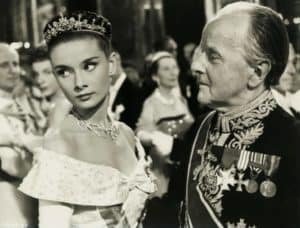
The Galleria Alberto Sordi was designed in the early 1900s by the architect Dario Carbone and built in the Art Nouveau style on the Via del Corso as Galleria Colonna. In 2003, the building was restored and renamed after the popular Roman actor Alberto Sordi, who had passed away that year, as Sordi had launched his career in a theatre, Teatro Galleria, which was part of the building.
Another wildly popular feature of Rome is the Trevi Fountain so, of course, it was only natural that it was featured in the film. After leaving Joe Bradley’s apartment, Ann goes for a stroll as she walks back to her palace. During her walk, she spots a young Italian woman with a short, trendy haircut coming out of a barbershop. She immediately enters and asks the barber, Mario Delani, to cut her hair. That shop was located east of Trevi Fountain (1629), at Via della Stamperia 85. Today, you’ll find a leather shop in its place. Another shot filmed at the Trevi Fountain is when Joe Bradley tries to steal a camera from a little American girl to snap a shot of Ann getting her hair cut.
Although thousands, maybe even millions, of people throw coins into the Trevi Fountain each year, perhaps few of them know that the coins are purportedly meant to be thrown using the right hand over the left shoulder. According to legend, throwing one coin means you’ll return to Rome, tossing two coins means you’ll also fall in love, and tossing three coins means you’ll return, find love, and get married.
As Joe, Ann and Irving leave G. Rocca Cafe on the Vespa ride through the city begins, Ann smashes into a few sidewalk cafe tables and some street vendor stalls, so they are taken to the Palazzo Della Consulta; the police station. The late Baroque palace was built between 1732 and 1735 and designed by Ferdinando Fuga. Originally built as the Papal Tribunal, today it is the Constitutional Court of the Italian Republic.
The Palazzo Colonna was also featured in the final scene of the film when Princess Ann answers questions from the press, and we watch the bittersweet ending as she chooses duty over love. The Palazzo Colonna is one of the largest in Rome and was transformed into the Baroque design in the 17th and 18th centuries, although some parts were constructed in the 13th century. Located in central Rome, at the base of the Quirinal Hill, and near the church of Santi Apostoli, it is built over ruins of an old Roman Serapeum.
The palace belonged to the prestigious Colonna family for over twenty generations and it now hosts the Colonna Art Gallery. The actual scene of the interview took place inside the famous Sala Grande Galleria, one of the rooms of the Palace. Who can forget the closing scene when Gregory Peck leaves the hall after the interview is over, walking alone through the empty room.The Colonna Art Gallery is open to the public on Saturday mornings, and it offers free guided tours in English at 11:45 am.
Another world-renowned Roman landmark that makes an appearance is the Roman Forum, where it is believed that people first gathered around 500 BC. Its original purpose was to serve as a marketplace for everyday trading activities. Over the next few centuries, its purpose changed to various other activities, such as voting, public speaking, social gatherings, criminal trials, gladiator matches, religious ceremonies and business deals. The Roman Forum lies in the valley between the Palatine and Capitoline hills and was reconstructed many times. Sadly, most of the original structure of the ancient Forum was destroyed in the 5th century AD. However, it still remains one of the most important historic landmarks around the world with around 5 million visitors every year, including Princess Ann and Joe Bradley who meet there as she had just escaped from the palace and he, from a poker game.
As Ann starting feeling fatigue due to the effects of a sleeping pill, she rests on a brick bench near the Temple of Saturn. That’s where Joe finds her, takes pity on her and tries to take her home, but unable to get her address, he takes her to his home instead. If you’re planning to visit, the Roman Forum is open to the public every day from 8:30am-4:30pm and like most landmarks in Rome, it is closed on Dec 25 and Jan 1.
The Mouth of Truth (Bocca Della Verita), considered the most lighthearted scenes in Roman Holiday, is where Joe Bradley puts his hand into the sculpture’s mouth at Basilica di Santa Maria in Cosmedin. According to legend, it would rip it right, if the person is a liar. It’s said Audrey Hepburn’s reaction to Gregory Peck’s hoax was genuine as he had decided to prank her in real life.The Mouth of Truth can be found at Piazza Della Bocca Della Verita, next to the Byzantine style Basilica of Saint Mary in Cosmedin which was built in the 6th century and later rebuilt in 1124.
La Bocca Della Verita is an ancient sculpture and although its original purpose has not been discovered, it is thought to represent an ancient god of the Tiber River and was originally part of a fountain. It was relocated to Basilica di Santa Maria in Cosmedin in the 17th century. The Bocca Della Verita is open to the public daily from 10am to 5pm.
Americans in Rome: The Lizzie McGuire Movie
A more recent film that is beloved by anyone who has lived through the golden era of Disney films is the Lizzie McGuire Movie. Made as a sort of sequel to the hit TV show Lizzie McGuire, the film focuses on the titular character as she goes on a trip with her friends to Rome, Italy. Through her adventures and run-ins with pop superstars, she tours one of the most beautiful cities in the world and takes us along for the ride.
The Trevi Fountain is where Lizzie and her best friend Gordo make wishes for the rest of their class trip. It’s also where she sees Paolo for the first time. At the Spanish Steps, Lizzie emerges after she undergoes a makeover from Paolo’s stylist.
The Villa d’Este at Tivoli Gardens is a 16th-century villa in Tivoli, near Rome, famous for its terraced hillside Italian Renaissance garden and especially for its many fountains. It’s at this spot where Lizzie and Paolo rehearse for the International Video Music Awards. We also can’t forget the Coliseum where the actual awards supposedly take place!
Italian Lovers: Casanova
Starring the late great Heath Ledger, this film, released in 2005, chronicles the legendary story of Casanova and how to finally finds the love of his life.
The film was mainly shot in Venice. One of its locations is in the Chapter Hall of the Scuola Grande di San Rocco instead of the Doge’s Palace, where Giacomo Casanova supposedly attended a masked ball held by the Doge. This room is well-known for its rich and luxurious decorations on the ceiling and walls, even though it was a religious brotherhood of devotees to the patron Saint against plagues. Built between 1524 and 1546, the hall is decorated with 35 paintings by the famous painter Jacopo Tintoretto. On the ceiling, you can find scenes from the Old Testament, while the walls feature paintings that depict the life of Christ. It is open to visitors every day from 9:30 am to 5:30 pm.
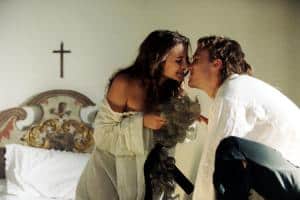
Another important landmark used in the film is the Palazzo Soranzo Van Axel which was used to film the exterior gardens at Donato House (Casanova’s patio). It’s a four-floor Palace, with two open courtyards.
We also can’t forget the various scenes where the characters course through Venice’s Grand Canal using the famous gondolas. Overall, the film offers pretty stunning scenery to support the romantic and dreamy story.
The Italian Job
A remake of the late 1960s film of the same name, The 2003 version of The Italian Job revolves around Charlie Croker (Mark Wahlberg) and his team who plan an elaborate gold heist against their former ally as revenge after being betrayed and left for dead in Italy.
As the movie opens, the heist takes place in Venice, Italy, particularly in Campo San Barnaba, Venice. Then, we move to Canazei, Trento, Trentino and we see the luscious white mountains of Alto Adige, Italy as the team celebrates and shares a toast. The area is well known for its beautiful landscapes and skiing activities.
Dreamy Landscapes: Film Locations in Italy
Undeniably, over the past few decades, Italy has provided fantastic locations for many of the top films coming from Hollywood. It’s picturesque coastal cities, countryside and gorgeous historical locations provide the best backdrop to many movies, whether drama, comedies, action or romance. There’s no doubt that any movie producer will find exactly what they’re looking for in Italy if they’re on the look-out for perfect filming locations. We hope that through this guide, you may be able to explore some of the locations that have inspired Hollywood filmmakers to create their cinematic masterpieces!






